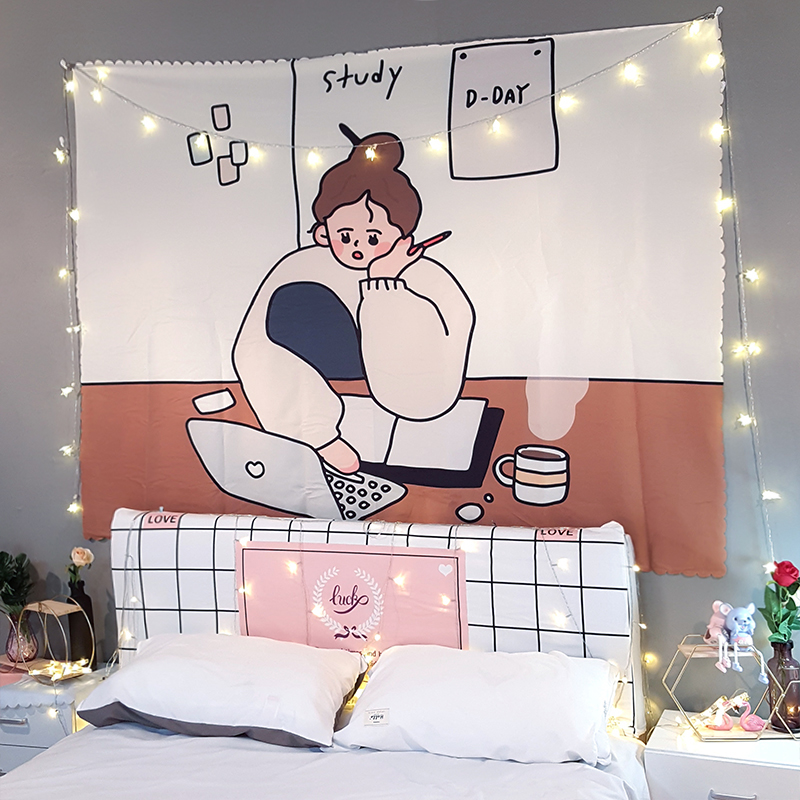Tapestry
The Art and History of Tapestry
Tapestry, a form of textile art, has been a significant cultural and artistic medium for centuries. Its intricate designs and detailed craftsmanship have made it a valued decorative and functional item throughout history. This article explores the history, techniques, and cultural significance of tapestry, highlighting its enduring appeal and contemporary relevance.
Historical Overview
The origins of tapestry date back to ancient civilizations, with the earliest known examples from ancient Egypt and Peru. These early tapestries were primarily used for functional purposes, such as clothing, blankets, and wall hangings.
Ancient Civilizations:
Egypt and Peru: Some of the oldest known tapestries have been found in Egyptian tombs and Peruvian burial sites, dating back to around 3000 BCE. These tapestries were often made from linen and wool, featuring simple geometric patterns and figures.
Middle Ages and Renaissance:
European Tapestry: During the Middle Ages, tapestry weaving flourished in Europe. The Gothic period saw the rise of large, elaborate tapestries used to decorate the walls of castles and churches. These tapestries often depicted religious scenes, historical events, and mythical stories.
Renaissance Revival: The Renaissance period brought renewed interest in classical themes and techniques. Workshops in Flanders and France became renowned for their high-quality tapestries, such as the famous “The Lady and the Unicorn” series.
Modern Times:
Contemporary Tapestry: In the 20th and 21st centuries, tapestry has evolved into a medium for modern artists. Contemporary tapestries often feature abstract designs and innovative materials, reflecting current artistic trends and technological advancements.
Techniques and Materials
The creation of a tapestry involves intricate weaving techniques and a variety of materials. Traditional tapestries are woven on a loom using weft-faced weaving, where the weft threads completely cover the warp threads, forming the design.
Looms:
Horizontal Looms: Used primarily in Europe, horizontal looms allow weavers to work on large sections of the tapestry at once.
Vertical Looms: Common in the Middle East and Asia, vertical looms are often more compact and portable.
Materials:
Fibers: Wool, silk, and linen are the most commonly used fibers in traditional tapestry weaving. Modern tapestries may incorporate synthetic fibers and mixed media.
Dyes: Natural dyes derived from plants, minerals, and insects have been traditionally used to color the fibers. Today, synthetic dyes offer a wider range of vibrant colors.
Weaving Techniques:
Cartooning: The process begins with a full-scale drawing, known as a cartoon, which guides the weaver in creating the design.
Weaving: The weaver interlaces weft threads over and under warp threads, following the cartoon to create the intricate patterns and images.
Cultural Significance
Tapestries have served various cultural and symbolic purposes throughout history. They have been used to display wealth and status, convey religious and political messages, and provide insulation in large, drafty buildings.
Decorative and Functional Use:
Wall Hangings: Tapestries have been used to decorate and insulate the walls of castles, churches, and homes.
Furniture Covers: Smaller tapestries have been used as tablecloths, bedcovers, and chair upholstery.
Symbolism and Storytelling:
Historical Narratives: Many tapestries depict historical events, legends, and religious stories, serving as visual records of cultural heritage.
Symbolic Meaning: The imagery in tapestries often carries symbolic meanings, reflecting the beliefs, values, and social status of the patrons who commissioned them.
Modern Interpretation:
Contemporary Art: Today, tapestry is embraced by contemporary artists who use the medium to explore new themes and techniques, blending traditional craftsmanship with modern art forms.
Public Art and Installations: Tapestry art can be found in public spaces and galleries, continuing to inspire and engage audiences with its rich visual and tactile qualities.
Conclusion
Tapestry is a timeless art form that has adapted and evolved over centuries. From its early beginnings in ancient civilizations to its role in modern art, tapestry continues to captivate with its intricate designs and cultural significance. Whether used for decorative purposes or as a means of storytelling, tapestries remain a testament to human creativity and craftsmanship.



